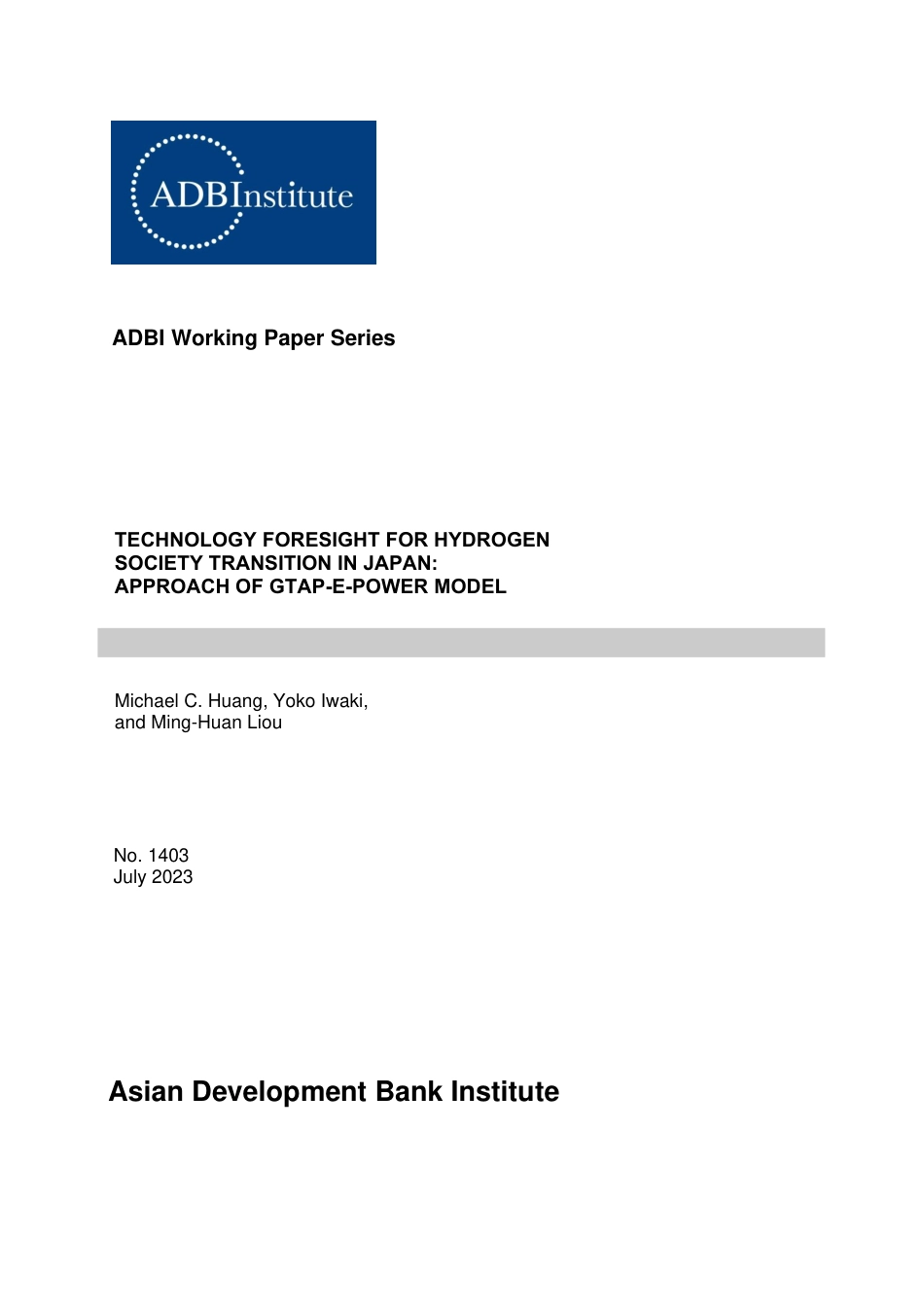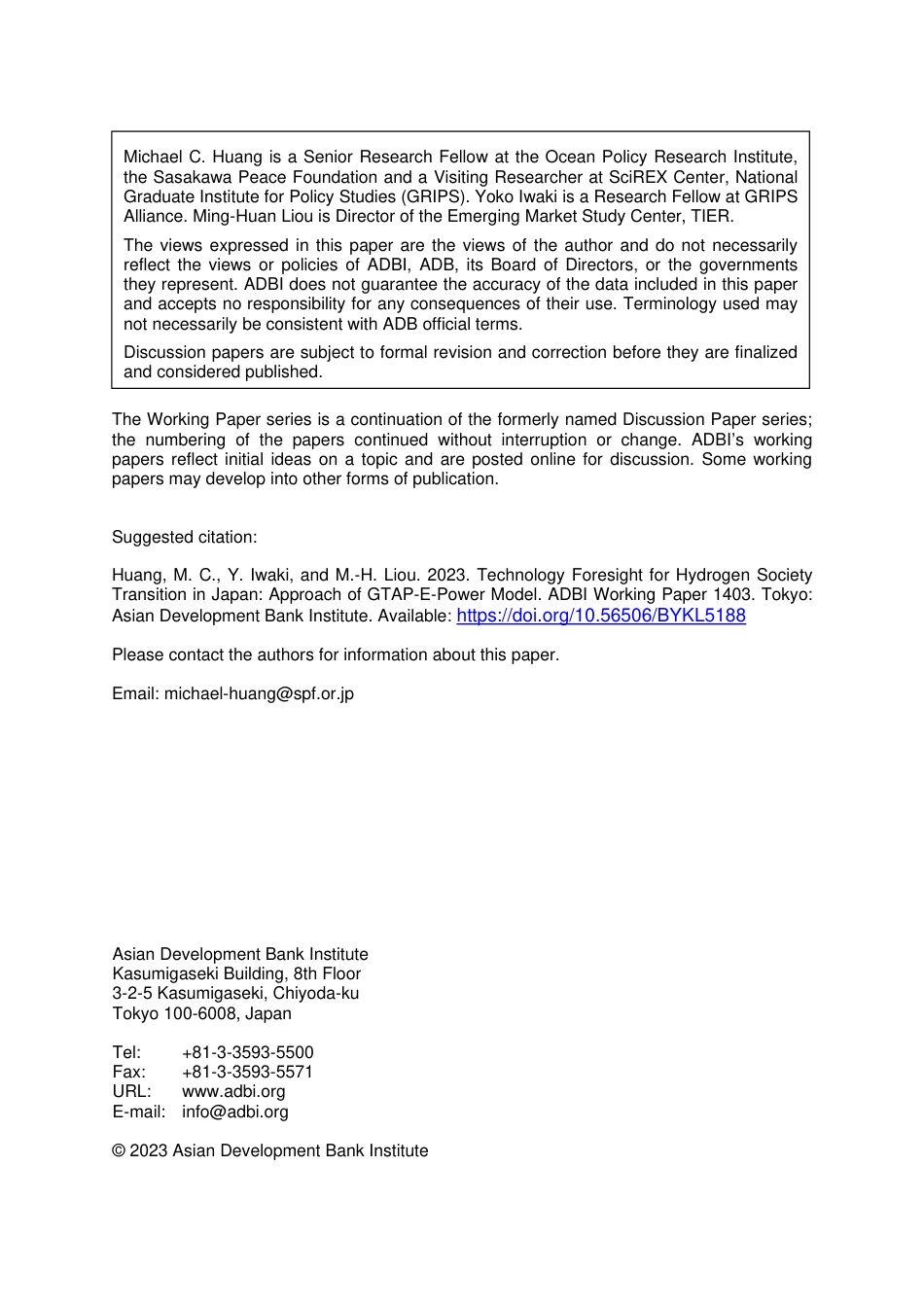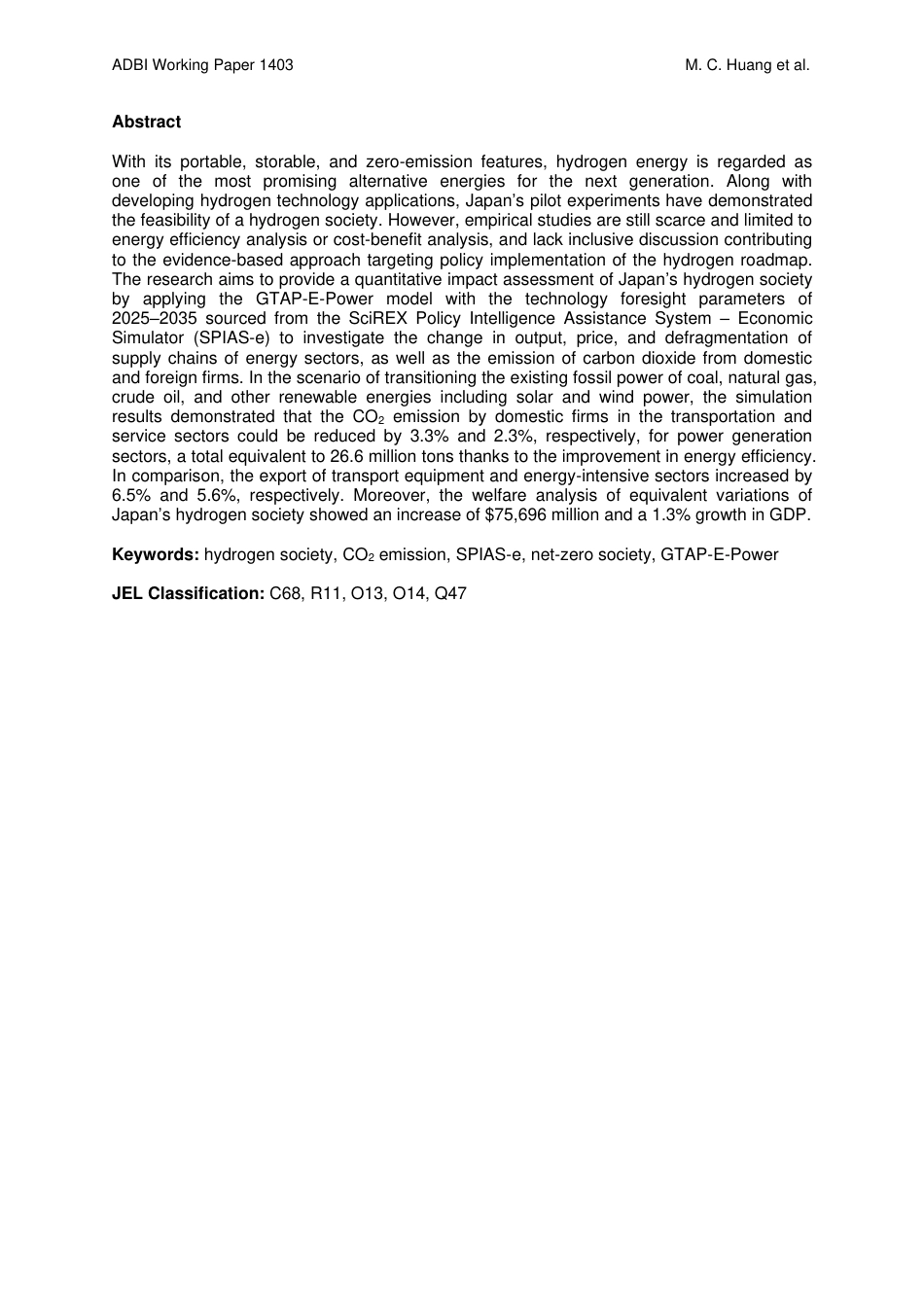ADBI Working Paper Series TECHNOLOGY FORESIGHT FOR HYDROGEN SOCIETY TRANSITION IN JAPAN: APPROACH OF GTAP-E-POWER MODEL Michael C. Huang, Yoko Iwaki, and Ming-Huan Liou No. 1403 July 2023 Asian Development Bank Institute The Working Paper series is a continuation of the formerly named Discussion Paper series; the numbering of the papers continued without interruption or change. ADBI’s working papers reflect initial ideas on a topic and are posted online for discussion. Some working papers may develop into other forms of publication. Suggested citation: Huang, M. C., Y. Iwaki, and M.-H. Liou. 2023. Technology Foresight for Hydrogen Society Transition in Japan: Approach of GTAP-E-Power Model. ADBI Working Paper 1403. Tokyo: Asian Development Bank Institute. Available: https://doi.org/10.56506/BYKL5188 Please contact the authors for information about this paper. Email: michael-huang@spf.or.jp Michael C. Huang is a Senior Research Fellow at the Ocean Policy Research Institute, the Sasakawa Peace Foundation and a Visiting Researcher at SciREX Center, National Graduate Institute for Policy Studies (GRIPS). Yoko Iwaki is a Research Fellow at GRIPS Alliance. Ming-Huan Liou is Director of the Emerging Market Study Center, TIER. The views expressed in this paper are the views of the author and do not necessarily reflect the views or policies of ADBI, ADB, its Board of Directors, or the governments they represent. ADBI does not guarantee the accuracy of the data included in this paper and accepts no responsibility for any consequences of their use. Terminology used may not necessarily be consistent with ADB official terms. Discussion papers are subject to formal revision and correction before they are finalized and con...



